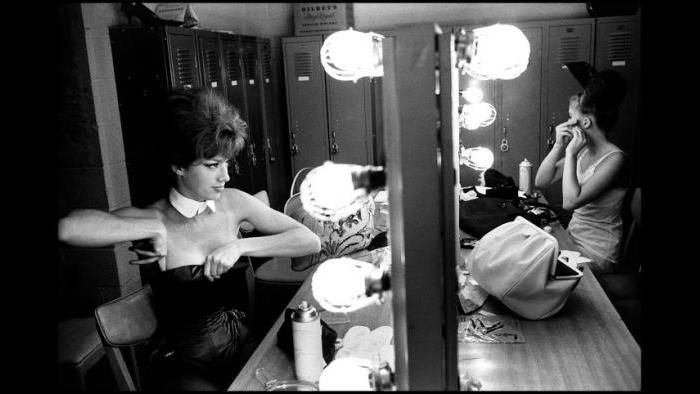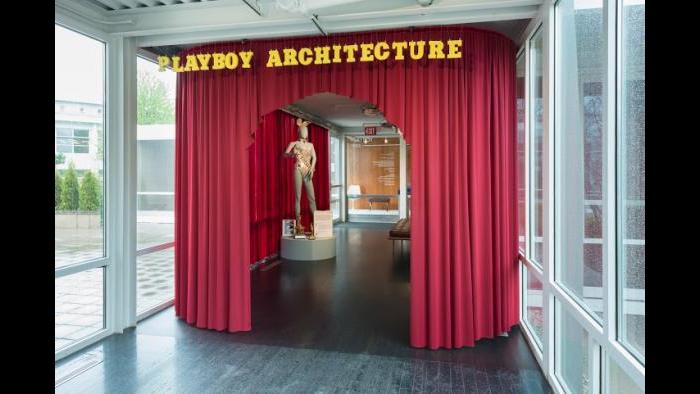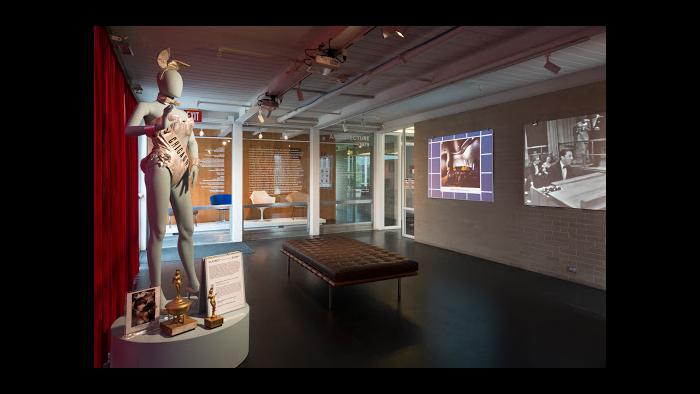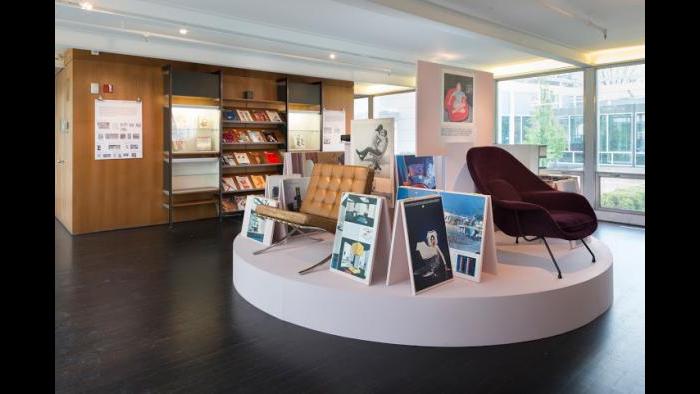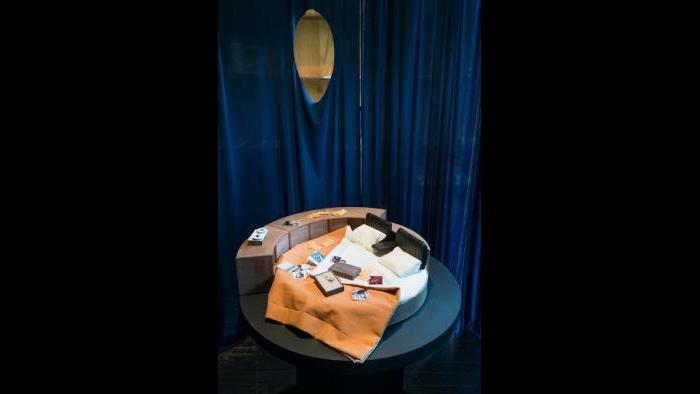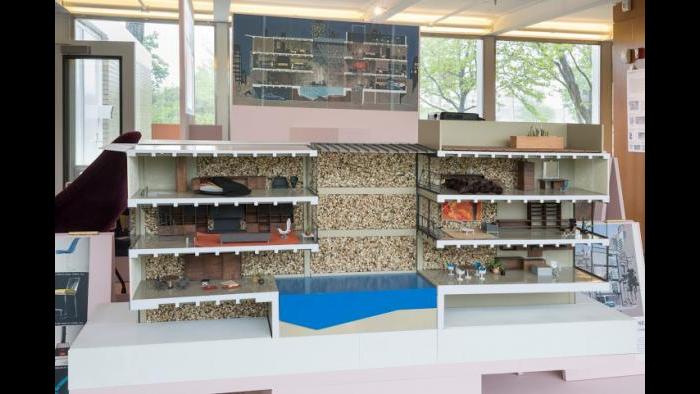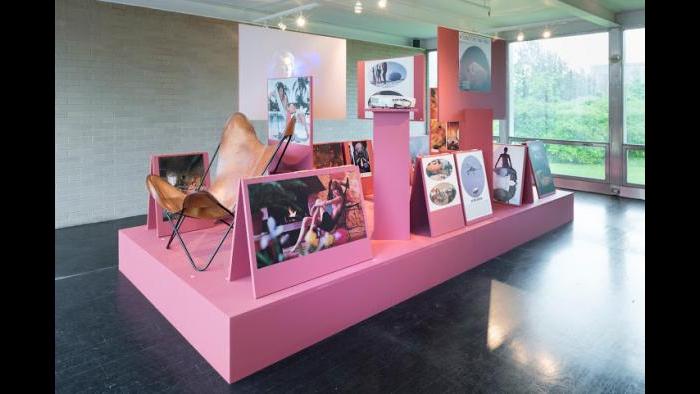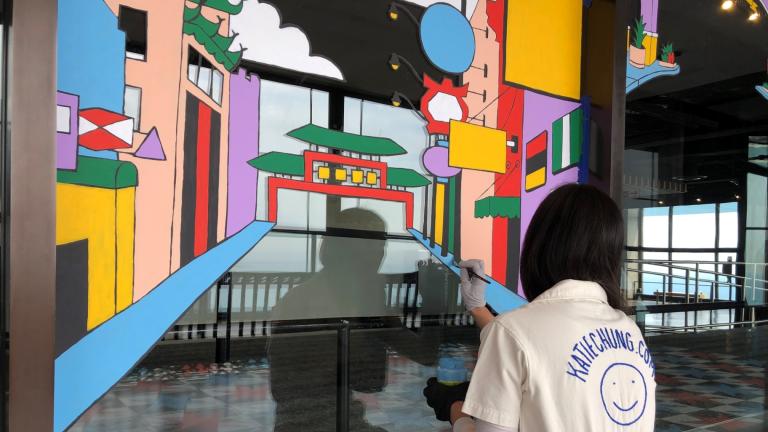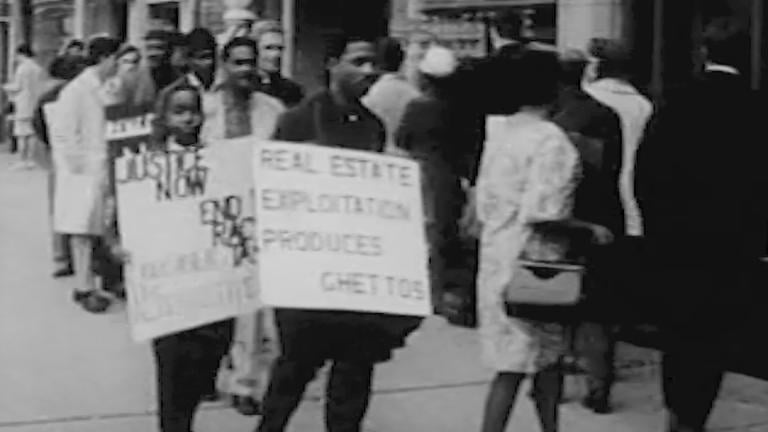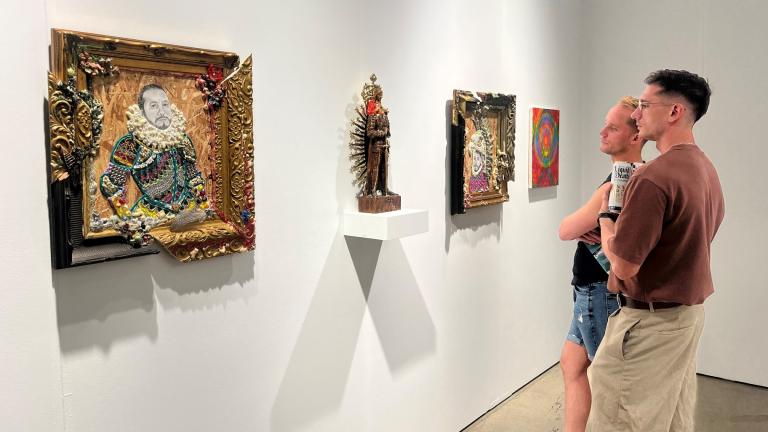Playboy was a radical concept in the conservative 1950s, but in the 62 years since it was conceived by founder Hugh Hefner, the magazine has advanced from its spot behind the counter at the drugstore to the walls of museums.
The Elmhurst Art Museum is now looking at how Playboy exposed its readers to new concepts in architecture and design. “Chicago Tonight” visited the museum during the installation of a show called “Playboy Architecture, 1953-1979.” Brandis Friedman has the story.
TRANSCRIPT
Jenny Gibbs, director, Elmhurst Art Museum: Playboy magazine played a huge role in influencing a taste for midcentury – it wasn’t "midcentury" at the time, it was just "modern" – art and architecture. And part of that, of course, was the design for the bachelor pad, which was all about using the furniture, and your electronics – your phonograph – to create this perfect environment for seduction.
Beatriz Colomina, professor, Princeton University: You cannot seduce without modern architecture. Modern architecture provides the environment and the tools that are necessary, according to Playboy, for seduction. There cannot be sex without modern architecture, and I think that’s really extraordinary.
Brandis Friedman: The exhibition started with a research seminar at Princeton University.
Colomina: It came together because I realized there was a lot of modern architecture and design in the magazine. We went issue by issue to look at the many ways in which architecture and design are presented in the magazine.
Gibbs: The exhibit is focused on a few themes: transportation, the bachelor pad are the primary ones. And what you’ll see are many of the original spreads, if you will – not the centerfolds but the spreads from the magazines showing where the design came from and how it was prevalent in the magazines.
 "Designs for Living" article in the July 1961 issue of "Playboy."
"Designs for Living" article in the July 1961 issue of "Playboy."
Friedman: Regular features looked at fantasy homes and the so-called “Playboy pad.” And of course the magazine was famous for its dazzling articles.
Colomina: You know, there was this joke in the ‘50s that you read Playboy for the articles, and it's actually true because there’s extraordinary articles and interviews with major cultural figures, anybody from Marshall McLuhan to Jean-Paul Sartre, really amazing writers and philosophers.
Friedman: We spoke with former Playboy Bunny, Candace Jordan, who lived at the original Playboy mansion in Chicago in the 1970s and was Playmate of the Month in December 1979.
Candace Jordan: This is the first time this costume’s ever been displayed and not long ago it was on “Antiques Roadshow” and the woman, the appraiser, said it was the most complete costume that she’s ever come across, so I’m pretty pleased with that. I mean, I have everything down to the nylons for this costume.
Video: Jordan talks about her start at Playboy.
Jordan: I’m still in contact with Hef. I mean, he’s 90 years old, and I hope he lives 100 more. He was all about the design world and everything from “Playboy after Dark” and all those sets were like – he had a certain vision and a style for that magazine that was exactly like what they’re talking about here.
Friedman: We asked her about living in the first Playboy Mansion at 1340 N. State Parkway.
Jordan: I pulled up to the door of the mansion on State Street and the butler says, "Right this way, Miss Collins." And I thought, “Yes, I’m home!” So it was really surreal to live at the Playboy Mansion. I mean this is when the Rolling Stones were there and all the celebrities. Anybody that came through town wanted to go to a party at the Playboy Mansion. The grotto, it was so cool because you’d slide down a fire pole and there was a plate glass window and the pool was underground. But they didn’t swim naked. I mean, he had swimsuits in all different sizes – bikinis for the girls that came – so he was very well prepared for out-of-towners to partake in the pool.
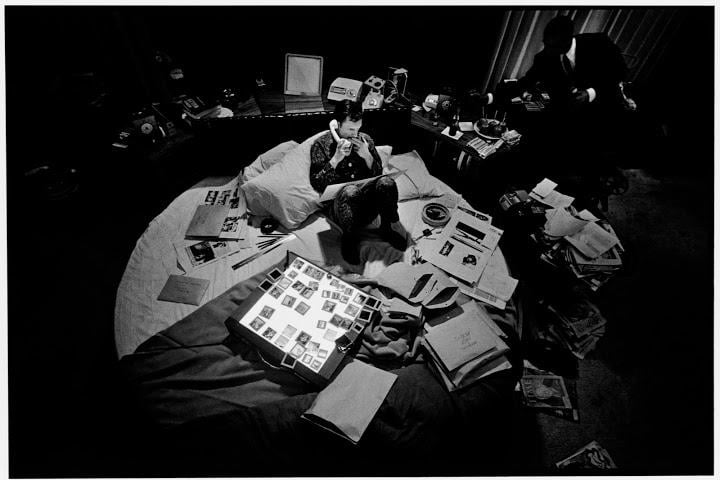 Hugh Hefner in his circular bed in 1966. (Burt Glinn)
Hugh Hefner in his circular bed in 1966. (Burt Glinn)
Friedman: The "Playboy Architecture" exhibition takes place inside an actual modern home adjacent to the Elmhurst Art Museum.
Gibbs: One of the main reasons why I wanted to bring this exhibition to the Elmhurst Art Museum is because the cornerstone of our collection is Mies van der Rohe’s McCormick House, which was completed in 1952. It’s really unique in that there are only three houses by Mies in the U.S.
We’re still very much living “Playboy” design I think. If you turn on HGTV, it’s all open concept, open plan. Midcentury modern is still hot. One of the architects later in the ‘70s said Playboy did more for improving the design in this country than “House and Garden.”
The exhibition "Playboy Architecture, 1953-1979" runs through Aug. 28 at the Elmhurst Art Museum. For hours and admission fees, visit the museum's website.
Related stories:
 Chicago’s Talking Statues Project Extended for Another Year
Chicago’s Talking Statues Project Extended for Another Year
Aug. 12: Thanks to an extension of Statue Stories Chicago, you still have plenty of time to chat with the Tin Man and Dorothy in Oz Park.
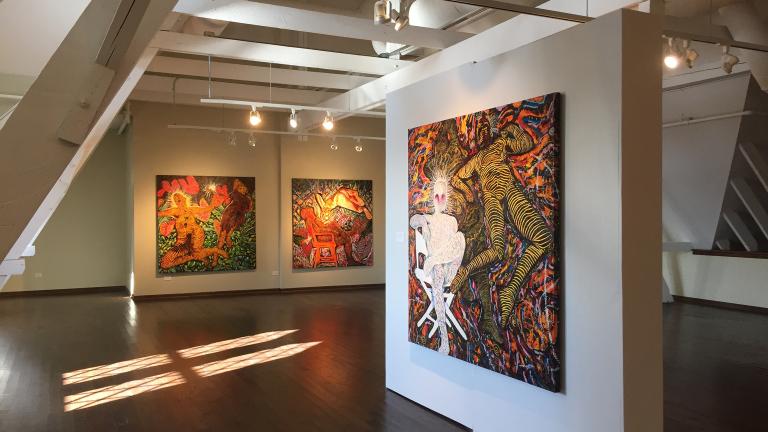 Puerto Rican Museum Celebrates Culture, Embraces New Traditions
Puerto Rican Museum Celebrates Culture, Embraces New Traditions
Aug. 10: Take a look inside a museum of Puerto Rican art and culture in a historic building in Humboldt Park.
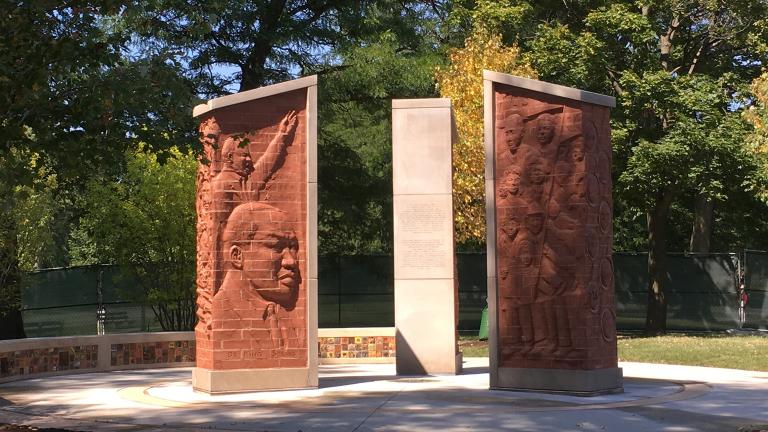 Remembering the 1st Step of Martin Luther King Jr.’s 1,000-Mile March
Remembering the 1st Step of Martin Luther King Jr.’s 1,000-Mile March
Aug. 4: Once a neighborhood unwelcoming to families of color, Marquette Park is not only a more diverse community today, but one that's now home to a Dr. Martin Luther King Jr. memorial.

